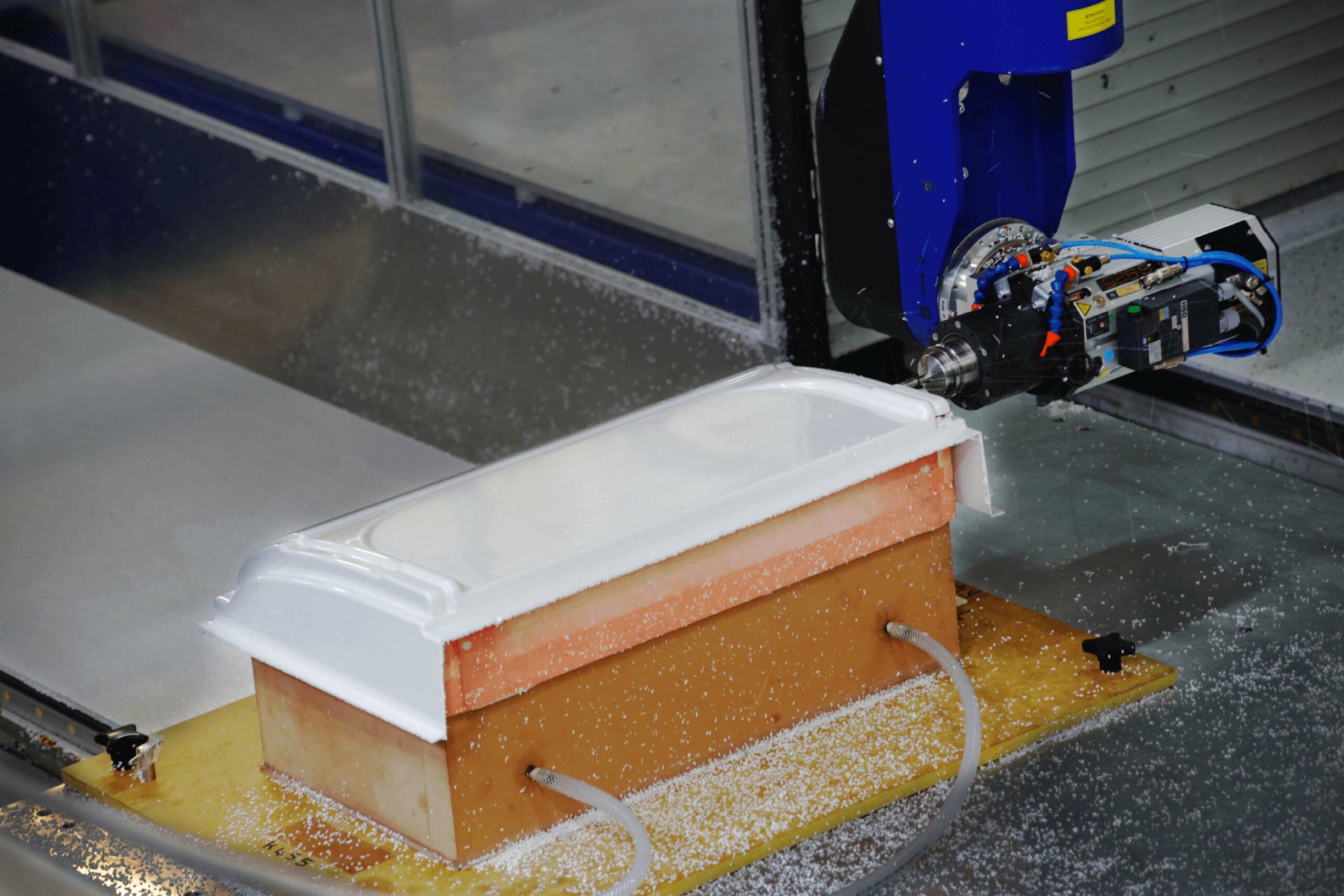Vacuum forming is a process used across many industries to create essential items. Whether those items are created for product packaging or for PPE equipment, i.e. a hard-hat, vac forming is essential to many industries. But, how does vac forming actually work?
As vacuum formers, here at Plas-Tech we understand that the process of vacuum forming is just as important as the final product; without the correct process, the end result may not be viable.
Create a Vac Forming Mould
The first step for any vacuum formed product is to create a product mould. The nature of vacuum forming means that thermoplastic is melted and ‘forms’ around the mould to create the desired shape.
Most commonly the mould is made from wood, but it can also be made from aluminium, 3D printed plastics (although they must have a higher melting point than the thermoplastic), or structural foam.
Depending on the size, nature, and detail required on the final product often determines what kind of material is used for the mould. The mould must also contain small, evenly spaced holes for the vacuum to be created when the air is removed.
Shape the Plastic Around the Mould
The next step after the mould has been created is to actually vacuum form the plastic onto it. There are specific types of plastics that have to be used for vac forming and, as a leading vacuum forming company in Yorkshire, we often use:
- ABS,
- HIPS,
- Polypropylene,
- HDPE,
- Polycarbonate.
The mould is put into the vac forming machine and the thermoplastic is also laid and secured and begins to melt. Once the plastic has reached the optimum temperature, the mould is raised into the plastic and any excess air is vacuumed out.
Removing the Vac Formed Product
Once the vac formed product has cooled and set, the mould is then removed. Final touches such as cutting and sanding are completed to achieve the finished product.
Contact us to discuss our vac forming services.
